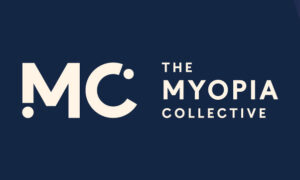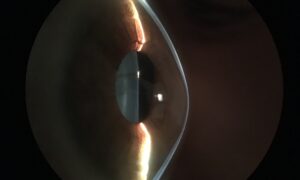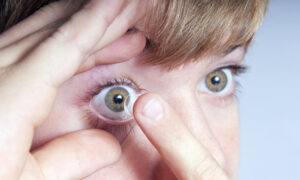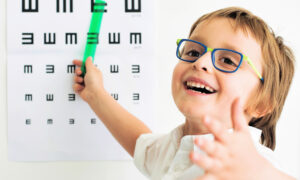June 17, 2024
By Dwight Akerman, OD, MBA, FAAO, FBCLA, FIACLE
While myopia can be optically corrected, such corrections cannot address the core issue: the abnormal elongation of the eyeball. The excessive globe elongation places myopic individuals at a higher risk of sight-threatening complications. No identified level of myopia can be considered safe concerning the ocular complications associated with it. Thus, the concern of slowing myopia progression and ultimately preventing its onset has grown significantly. This has generated significant research interest in developing effective methods to slow the progression of myopia and/or delay its onset. Several clinical trials have demonstrated the beneficial effects of various myopia control strategies, some of which have been adopted in mainstream clinical practice.
This review article provides an overview of established therapeutic approaches and evolving methods for controlling myopia onset and progression. Some of the effective methods identified for slowing myopia progression include topical low-dose atropine eye drops, defocus incorporated multiple segments (DIMS) spectacle lenses, highly aspherical lenslets target (HALT) lenses, diffusion optics technology (DOT) spectacle lenses, red light therapy (RLT), multifocal soft contact lenses, and orthokeratology.
The authors point out that 0.05% atropine, HALT lenses, RLT, and +3.00 peripheral addition soft contact lenses have been shown to yield over 60% reduction in myopia progression. Additionally, DIMS, DOT, and MiSight 1 day contact lenses demonstrate at least 50% myopia control efficacy. It is highlighted that 0.05% atropine demonstrates a more optimal balance of efficacy and safety than 0.01%. The efficacy of 0.01% atropine has not been consistent and requires further validation across diverse ethnicities. Combining atropine 0.01% with orthokeratology or DIMS spectacles yields better outcomes than using these interventions as monotherapies.
The article also emphasizes the importance of increased outdoor time as an effective public health strategy for myopia prevention. Recent studies discussed in the article suggest that 0.05% low-concentration atropine and RLT therapy have promising potential as clinical myopia prevention interventions for high-risk groups. Furthermore, the authors underline the need for proper instruction and regular follow-ups to maintain safety and monitor any potential complications when considering myopia control interventions other than spectacle lenses. They also stress that myopia control spectacle lenses, being the least invasive, are safe for long-term use.
The authors remind us that variations in ethnicity and age groups of participants have been major hindrances to extrapolating results and directly comparing the effectiveness of different treatment methods. This may make it challenging for eye care practitioners to confidently recommend the most effective intervention to their patients. There has not been widespread clinical uptake of some potentially efficacious interventions such as atropine 0.05%. This could be due to the predominantly Asian population of the participants who were enrolled in the trials. Future trials involving other races are warranted.
The article’s conclusion highlights the significant advances made in myopia control strategies, many of which have shown meaningful clinical outcomes. However, the authors stress that regular use and adequate safety monitoring over extended durations are imperative. They emphasize that extensive clinical experience is necessary to build confidence in the effectiveness and safety of these interventions.
In summary, the review article provides a comprehensive overview of the advances in myopia control strategies for children, emphasizing the importance of timely interventions, the efficacy of various methods, and the need for long-term safety monitoring and clinical experience.
Abstract
Advances in Myopia Control Strategies for Children
Xiu Juan Zhang, Ebenezer Zaabaar, Amanda Nicole French, Fang Yao Tang, Ka Wai Kam, Clement C Tham, Li Jia Chen, Chi Pui Pang, Jason C Yam
Myopia has long been a global threat to public health. Timely interventions are likely to reduce the risk of vision-threatening complications. There are both established and rapidly evolving therapeutic approaches to slow myopia progression and/or delay its onset.
The effective methods for slowing myopia progression include atropine eye drops, defocus incorporated multiple segments (DIMS) spectacle lenses, spectacle lenses with highly aspherical lenslets target (HALT), diffusion optics technology (DOT) spectacle lenses, red light therapy (RLT), multifocal soft contact lenses and orthokeratology. Among these, 0.05% atropine, HALT lenses, RLT and +3.00 peripheral addition soft contact lenses yield over 60% reduction in myopia progression, whereas DIMS, DOT and MiSight contact lenses demonstrate at least 50% myopia control efficacy. 0.05% atropine demonstrates a more optimal balance of efficacy and safety than 0.01%. The efficacy of 0.01% atropine has not been consistent and requires further validation across diverse ethnicities. Combining atropine 0.01% with orthokeratology or DIMS spectacles yields better outcomes than using these interventions as monotherapies. Increased outdoor time is an effective public health strategy for myopia prevention, while recent studies suggest that 0.05% low-concentration atropine and RLT therapy have promising potential as clinical myopia prevention interventions for high-risk groups. Myopia control spectacle lenses, being the least invasive, are safe for long-term use. However, when considering other approaches, it is essential to ensure proper instruction and regular follow-ups to maintain safety and monitor any potential complications. Ultimately, significant advances have been made in myopia control strategies, many of which have shown meaningful clinical outcomes. However, regular use and adequate safety monitoring over extended durations are imperative to foster confidence that can only come from extensive clinical experience.
Zhang, X. J., Zaabaar, E., French, A. N., Tang, F. Y., Kam, K. W., Tham, C. C., … & Yam, J. C. (2024). Advances in myopia control strategies for children. British Journal of Ophthalmology.
DOI: https://doi.org/10.1136/bjo-2023-323887














